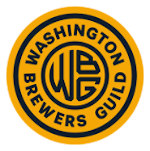At last, the heated arguments have quieted and we can discuss this like adults.
Are you familiar with this new style of IPA? It’s been gaining popularity lately. It was February of 2021 when I tossed a cup of gasoline onto something I did not recognize as a fire. My original post introducing Cold IPA was met with some heated criticism. Some folks dug their heels in and insisted this was not a new style, just a new name, just some kind of marketing hype. I’m just sharing the info and explaining the style to folks who aren’t yet familiar with it.
It is, in fact, a new style, or at least a new version of the style. I am not trying to change anybody’s mind and I know that some folks have firmly planted their flag on the subject and it cannot be moved. I am sorry if you’re incapable of fully understanding the information presented.
Now, 15 months after I posted my first story about Cold IPA, the hoopla and controversy have subsided a bit and the style is gaining popularity. Lucky Envelope Brewing, for instance, released Water Tiger Cold IPA this week (pictured above). Other notable Washington breweries have also hopped aboard the train. Stay Frosty by Reuben’s Brews, Ecotone by Georgetown Brewing, Baxter by Fremont Brewing, and Cashmere by Icicle Brewing, to name just a few.
Wayfinder Beer of Portland, Oregon deserves credit for introducing this new style of beer. “We made the first Cold IPA called Relapse IPA in October 2018 in honor of Relapse Records,” the company’s website explains. “We were trying to make something with the elements of West-Coast IPA but taken to the extreme. We wanted something drier with excessive hoppiness but a cleaner finish… It’s Wester than West Coast.”
For those who missed it the first time around, and since it is still kind of a new style of beer, I share more information here. I just googled the exact phrase “cold ipa” and it returned over 117,000 results. This is no longer an outlier. It is now officially a thing.
So what makes Cold IPA different?
To brew a crisper version of IPA, brewers create Cold IPA using pilsner malt and lager yeast. Sounds a bit like an India Pale Lager, right? Well, it’s not. To begin with, because it’s an IPA, its ABV is higher than an IPL, but there’s more.
Because it is an ale, it is fermented at a higher temperature. Lagers are brewed using lager yeast, which is most effective between 48 and 58 degrees Fahrenheit. Ales are fermented with ale yeast, which is most effective between 60 and 78 degrees Fahrenheit. This new style of IPA is often described as a hybrid style because it is brewed using lager yeast at ale temperatures. Well, warmer than normal lager temps anyway.
Wayfinder’s Relapse IPA’s malt bill, as an example: “Adjunct lager malt bill. 20-40% rice or corn mashed with all American two-row pilsner malt. No caramel malts. Fermented to incredible dryness.”
As I said, this style is most often brewed using pilsner malt. A lot of brewers use pilsner malt in their IPAs, so a brewer needs to do more than that to make a Cold IPA. Adjuncts (rice and/or corn, for example) might be used to lighten the body. Brewers need to find a way to create the desired ABV without creating more malt character, another thing that sets it apart from other types of IPA.
Since it’s an IPA, expect gobs of hop character. Do not expect to find old-world, noble hop varieties like you might find in a traditional pilsner (Saaz and Hallertau e.g.); rather, Cold IPA is more likely to feature new world hop varieties (Mosaic, Citra, Strata, Sabro, Azacca, and so on). Expect the kind of citrusy, tropical, resinous, pithy, fruity hop character you might find in the latest and greatest IPAs.
An IPL is essentially just a very hoppy lager. This is not a lager. Can you taste the difference between an IPL and a Cold IPA? Maybe, maybe not. Some folks can’t taste the difference between a Brown Ale and a Porter, but that doesn’t mean they’re the same thing.
More About This New Beer Style
The folks at Verde Brand Communications created this cool graphic to help describe Cold IPA.

They also published a nice, in-depth description of this emerging beer style here.
































